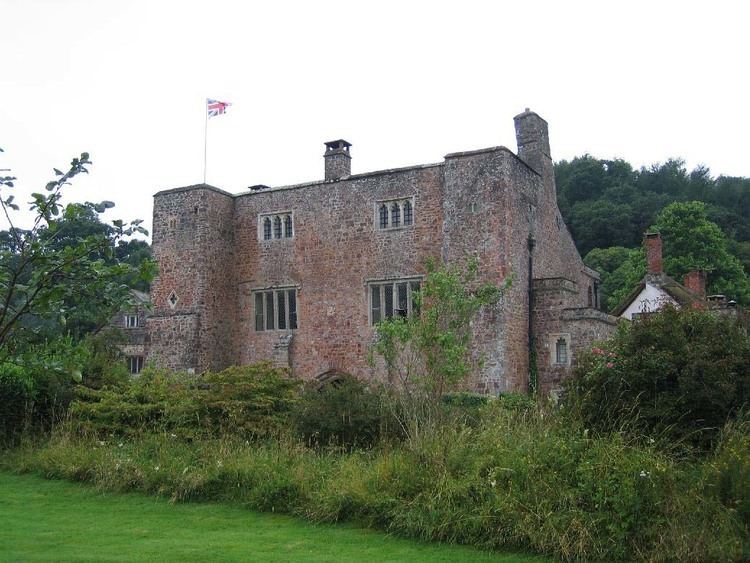Designated 28 August 1987 Designated 28 August 1987 Designated 24 October 1951 | Reference no. 1325638 Reference no. 1325639 Phone +44 1884 855363 | |
 | ||
Address Bickleigh, Tiverton EX16 8RP, UK Similar Exeter Castle, Mid Devon District Council, Huntsham Court, Fisherma Cot, Stoodleigh Court | ||
Bickleigh castle weddingtv
Bickleigh Castle is a fortified manor house that stands on the banks of the River Exe at Bickleigh in Devon, England. Once considerably larger, Bickleigh now comprises a group of buildings from various periods which together formed a water castle.
Contents
- Bickleigh castle weddingtv
- Bickleigh castle aerial tour
- History
- Buildings
- Gatehouse
- Chapel
- Old Court
- North Range
- Moat Cottage
- Stable block
- Grounds
- Current use
- References
The main building was destroyed during the English Civil War, however other buildings, mostly arranged around a central courtyard survive, although frequently restored and revised survive. The castle has been open to the public and now serves as a wedding venue and provides holiday rentals.
Bickleigh castle aerial tour
History
A Norman motte castle of the late 11th or early 12th century was dismantled in the mid 12th century. During this time a small stone chapel was built in the bailey. In the 15th century the Courtney family built a mansion on the site and incorporated some of the earlier buildings. The Carew family then lived there for over two centuries.
During the English Civil War Charles I's queen, Henrietta Maria stayed in the castle until word was received that Fairfax's Parliamentarian troops were approaching, following which she fled to France. The bulk of the castellated structure was then demolished by Parliamentarian troops. The 'slighting' of Bickleigh was a response to the Royalist sympathies of the Carew family and its use as a stronghold during the conflict with the main manor house and inner keep being destroyed.
Following the Restoration, a typical Devon farmhouse of cob and thatch was added.
The buildings subsequently fell into disrepair, and became a farm store and cottage until they were restored early in the 20th century. The Norman chapel and a 14th-century gatehouse still exist.
Buildings
The west range no longer survives. A building now known as the "Old Court" is south of the courtyard. Along with the North range and gatehouse most of the buildings were arranged around a central courtyard. The chapel is east of the rest of the buildings close to the River Exe. Moat Cottage is north of the other buildings.
Gatehouse
The gatehouse dates from the early 15th century and is a Grade I listed building. It is a three storey single-depth plan stone structure with an asbestos slate roof surmounted by turrets. A central carriage archway leads into a courtyard. The building was substantially restored in the 1920s and 1930s.
Chapel
The sanctuary of the chapel pre-dates the Normans. The first documentary evidence of this building is circa AD600 probably before the Saxons arrived circa AD 660, with further documentary reference to it being a chapel circa AD800s. The Sanctuary is the oldest part no doubt altered during that time. There is archeological evidence of a wall at the west end of the Sanctuary with an arch, dividing it from the then nave. This was demolished when the nave was enlarged and replaced with a wooden Rood Screen. The current "wagon roof" dating from the 15th century. It is often cited as the oldest complete building in Devon.It was substantially renovated in the early 20th century.
Old Court
The Old Court was south of the range around the courtyard. It was built in the late 16th century, however it has been revised and added to many times and part of the structure may have been demolished. It may have formed a hall house covered by a five arch braced jointed truss cruck roof.
North Range
The North Range was built in the late 17th century and served as a farmhouse. It is a two storey building with a thatched roof. In the left end room is a 17th-century overmantel carved with biblical scenes which may commemorate the role of the Carew family in putting down the Prayer Book Rebellion of 1549. The building was restored in the 1930s.
Moat Cottage
Moat Cottage which stands to the north of the other buildings was constructed in the late 16th century. It is a stone building with a thatched roof.
Stable block
The thatched former stable block was rebuilt in the 19th century on the site of an earlier building. It is surmounted by a turret clock. It has now been converted into cottages and a visitor centre.
Grounds
It is set in 30 acres (12 ha) of grounds of which 5 acres (2.0 ha) are landscaped.
Current use
The castle was open to the public from 1970 to 1990 and was visited by 20,000 people each year.
The castle and surrounding buildings are now available to rent as a wedding venue or as holiday lets. The garden walls, gate piers and gates are also designated as listed buildings.
